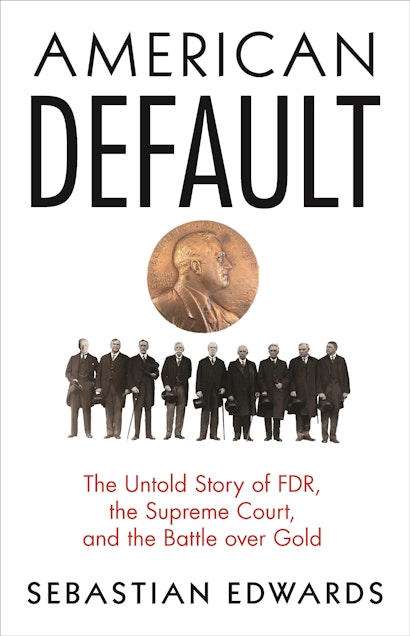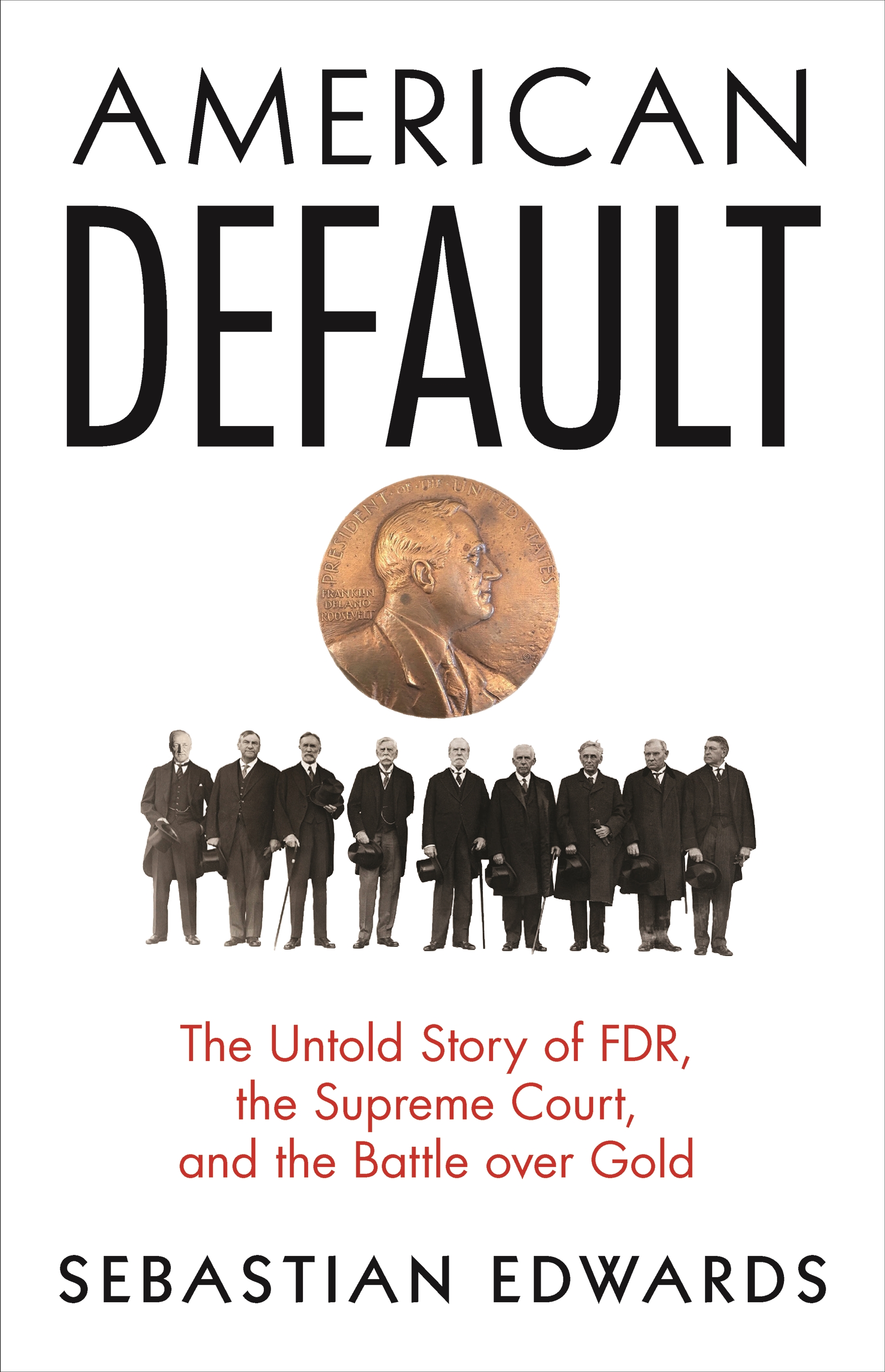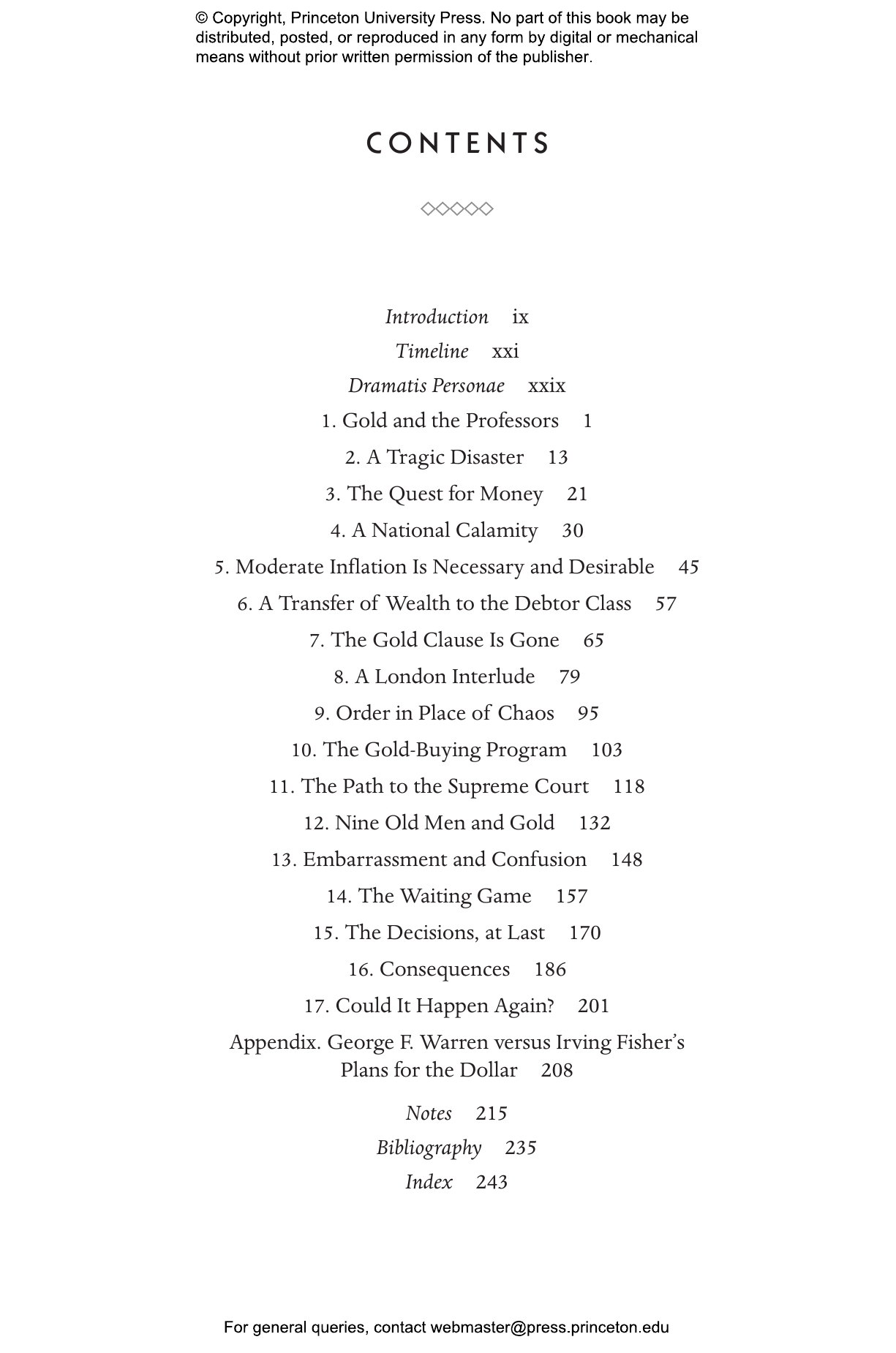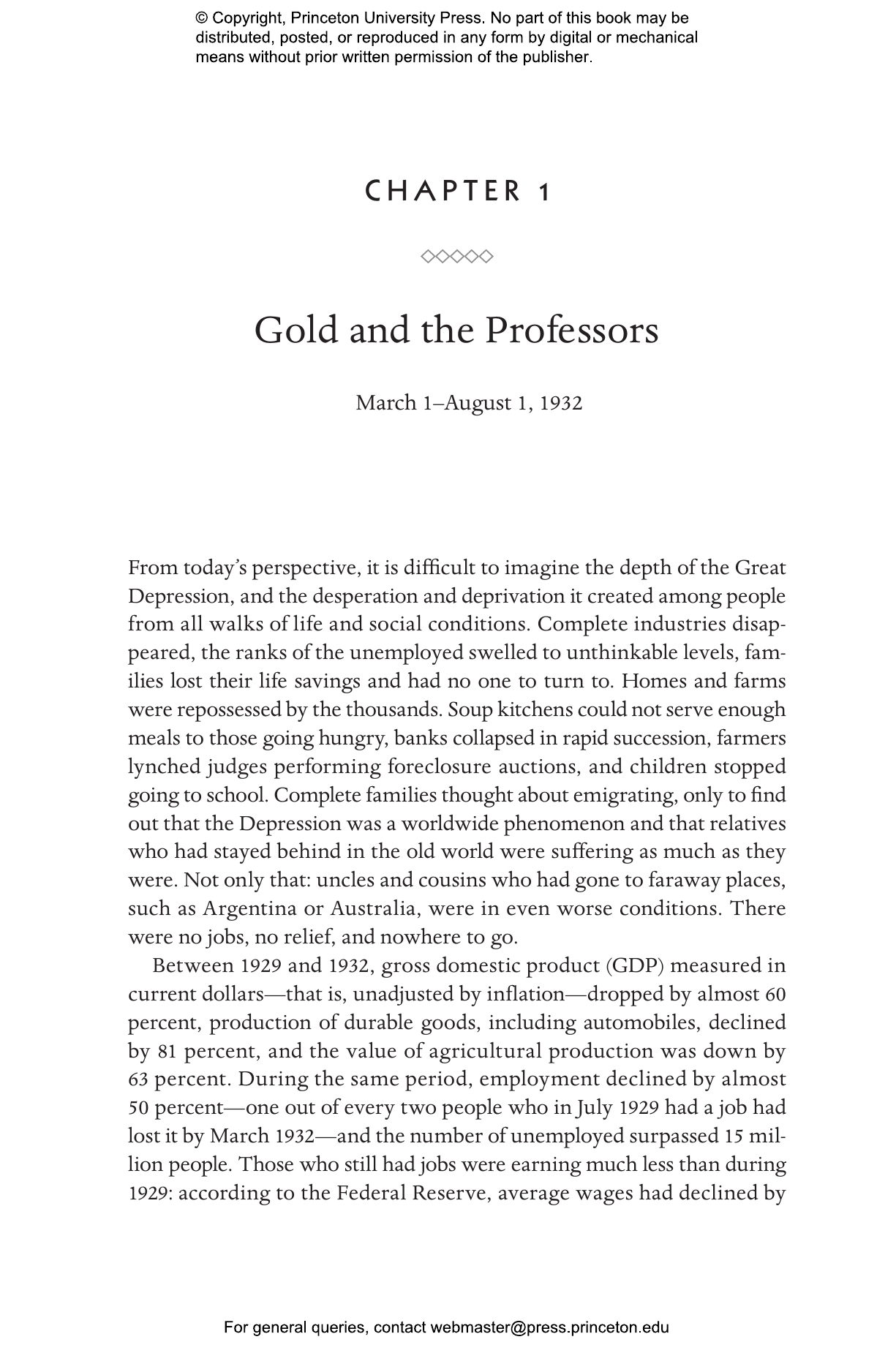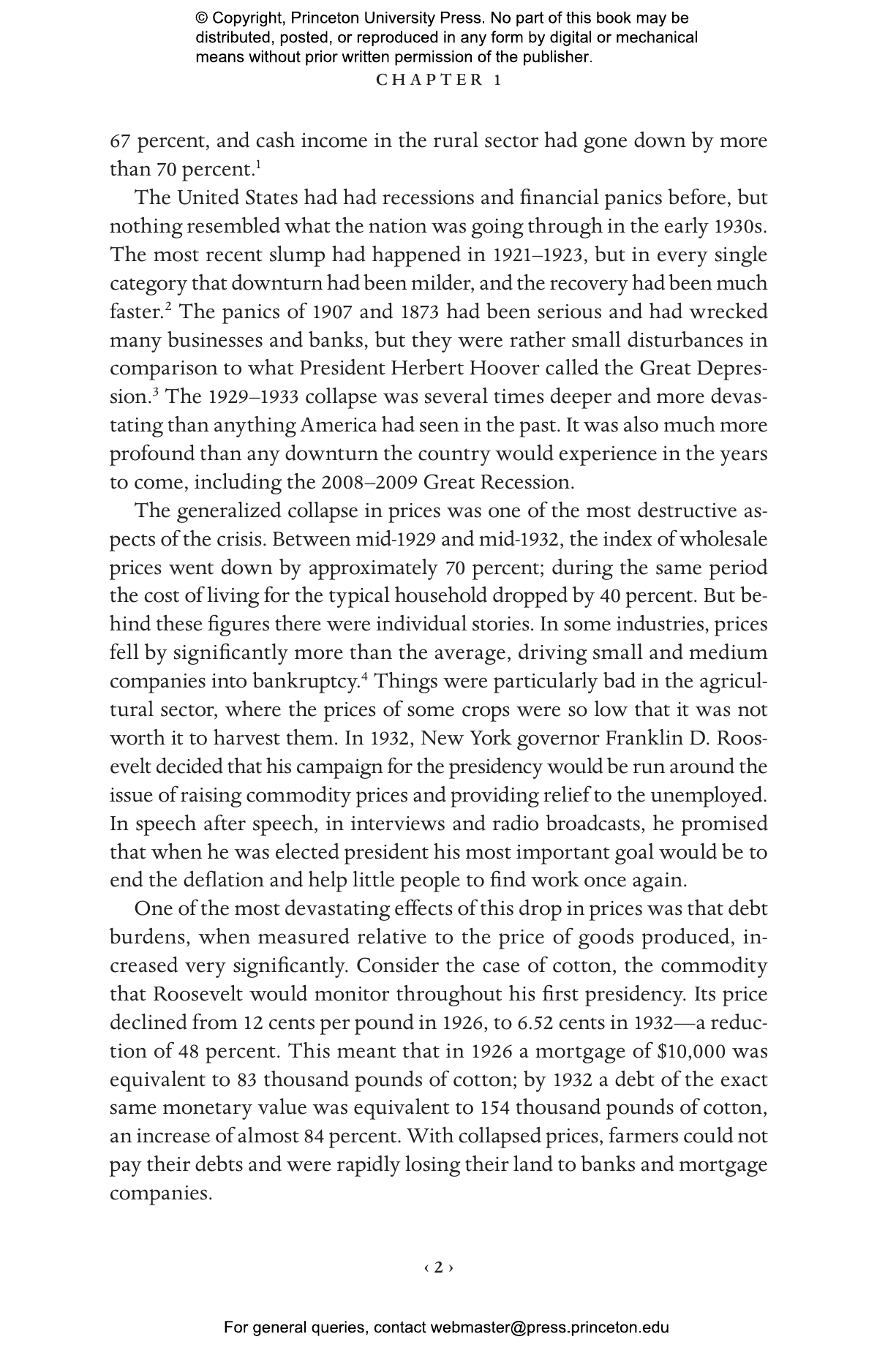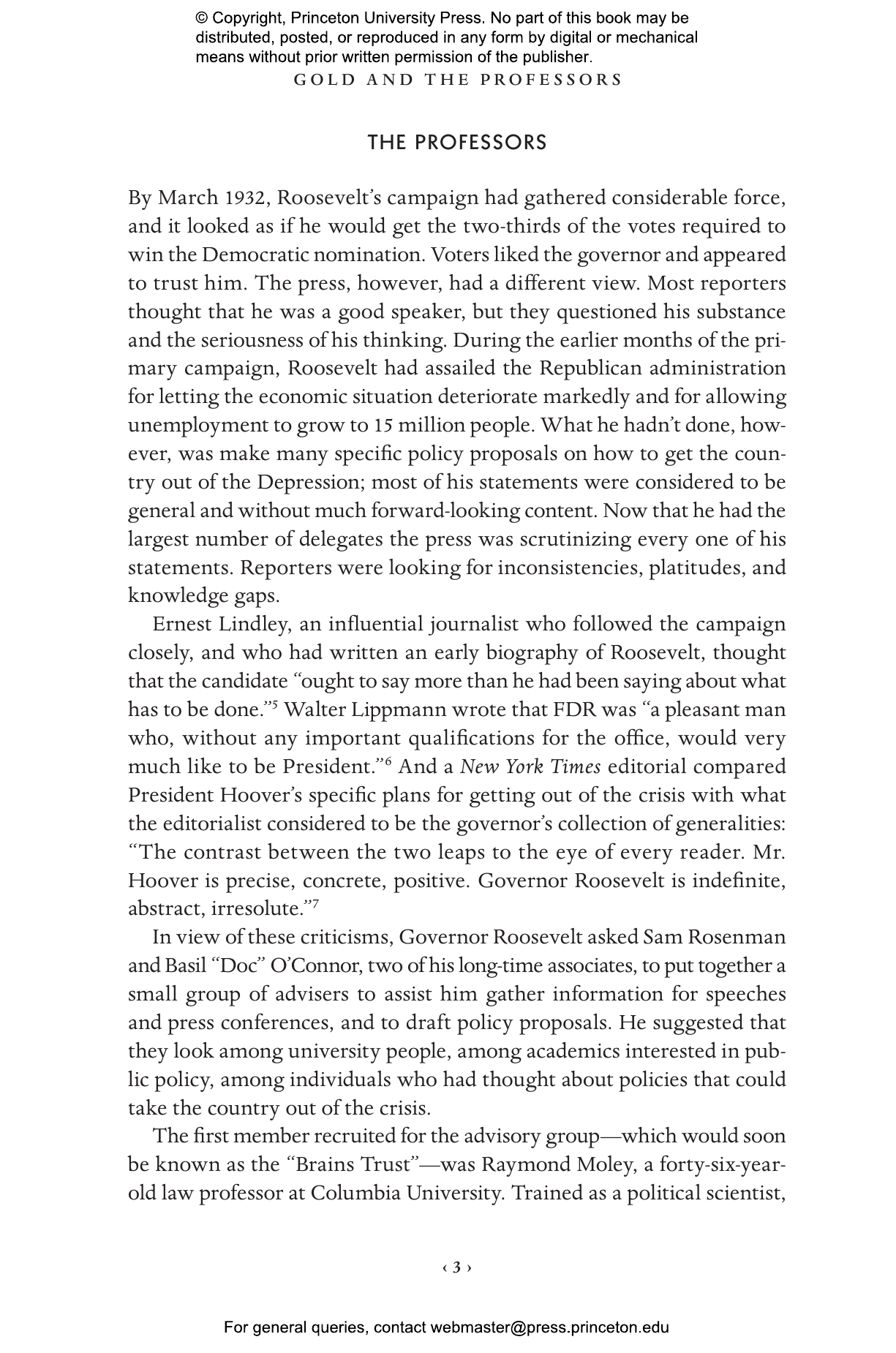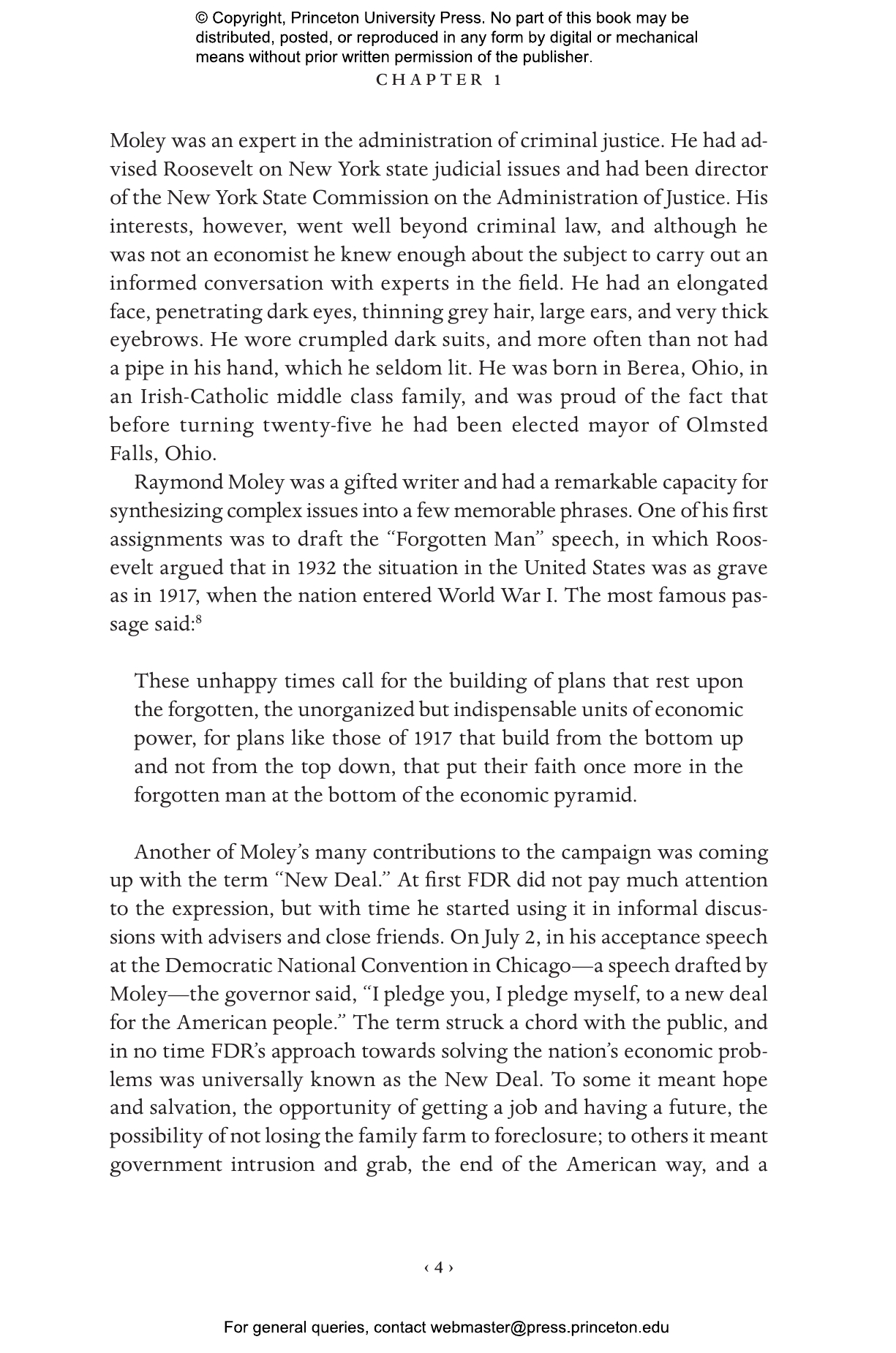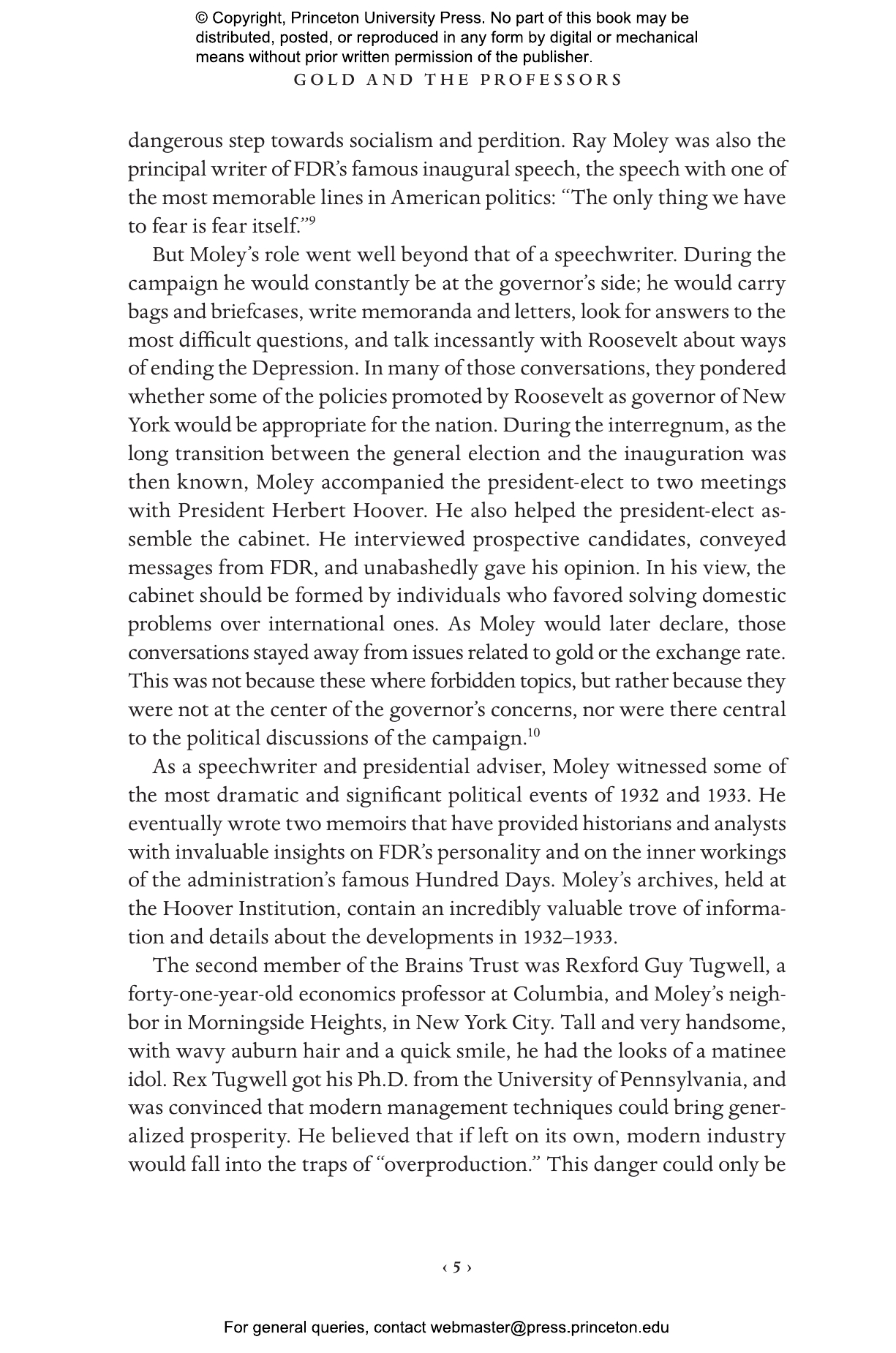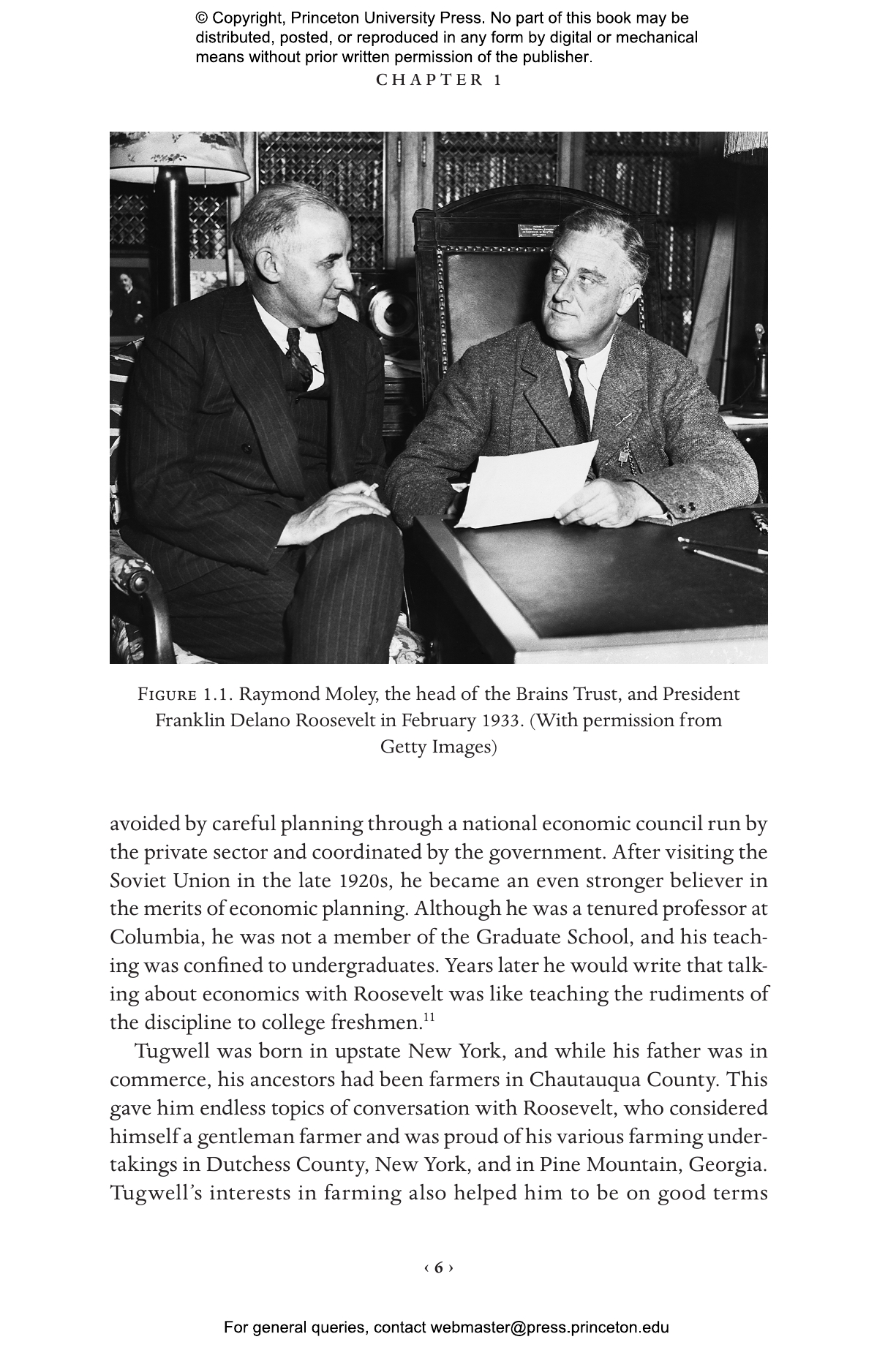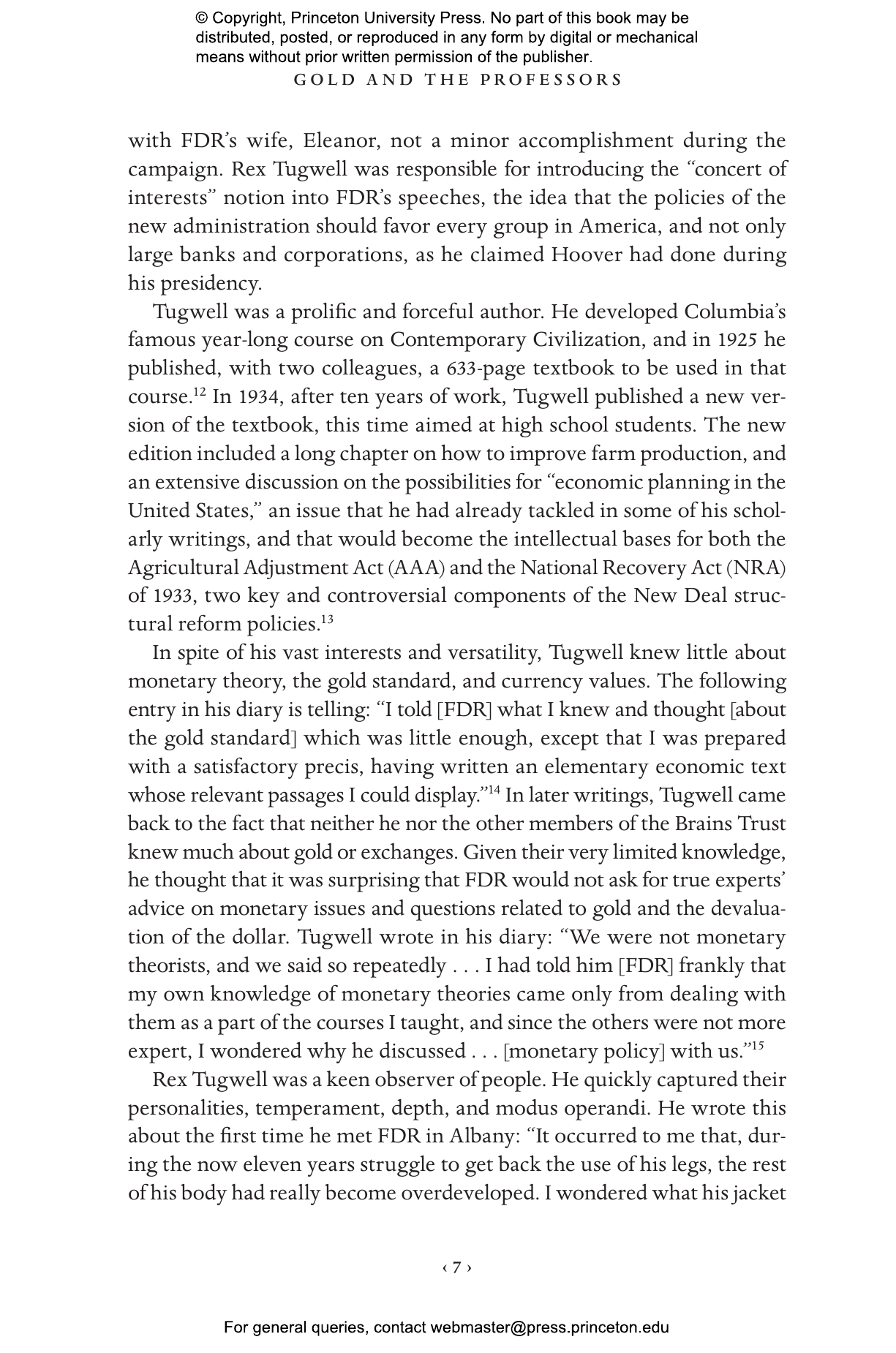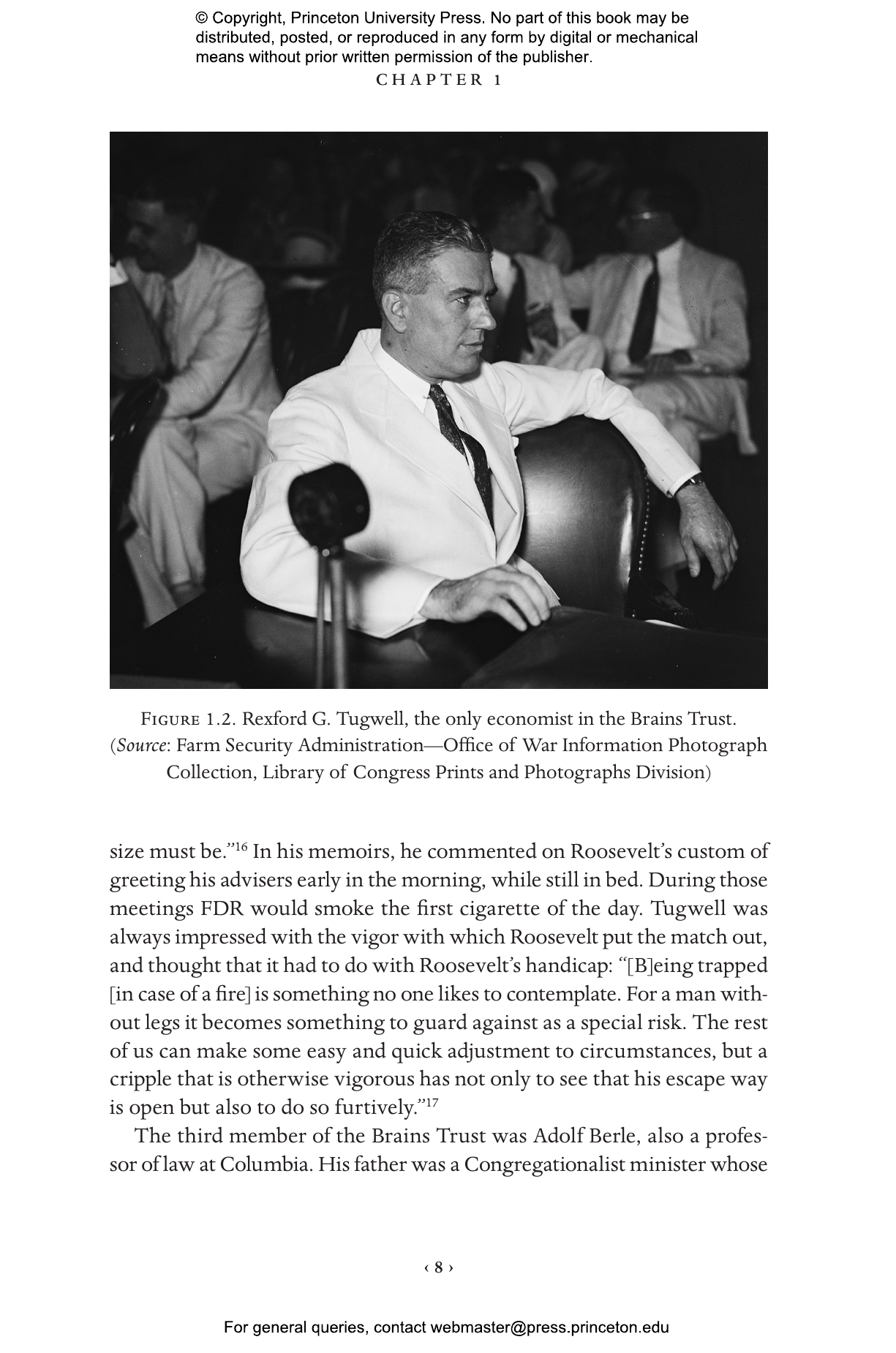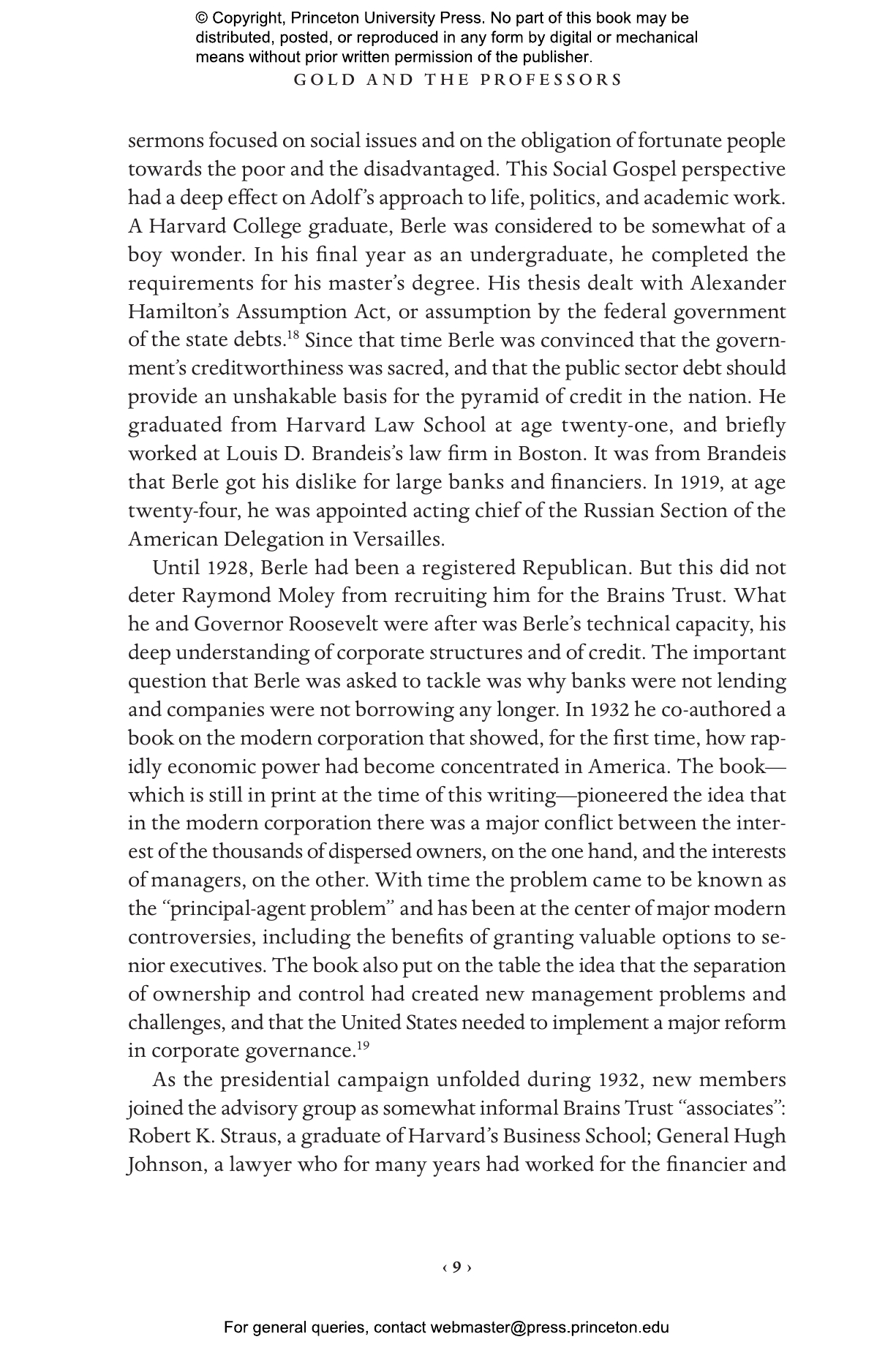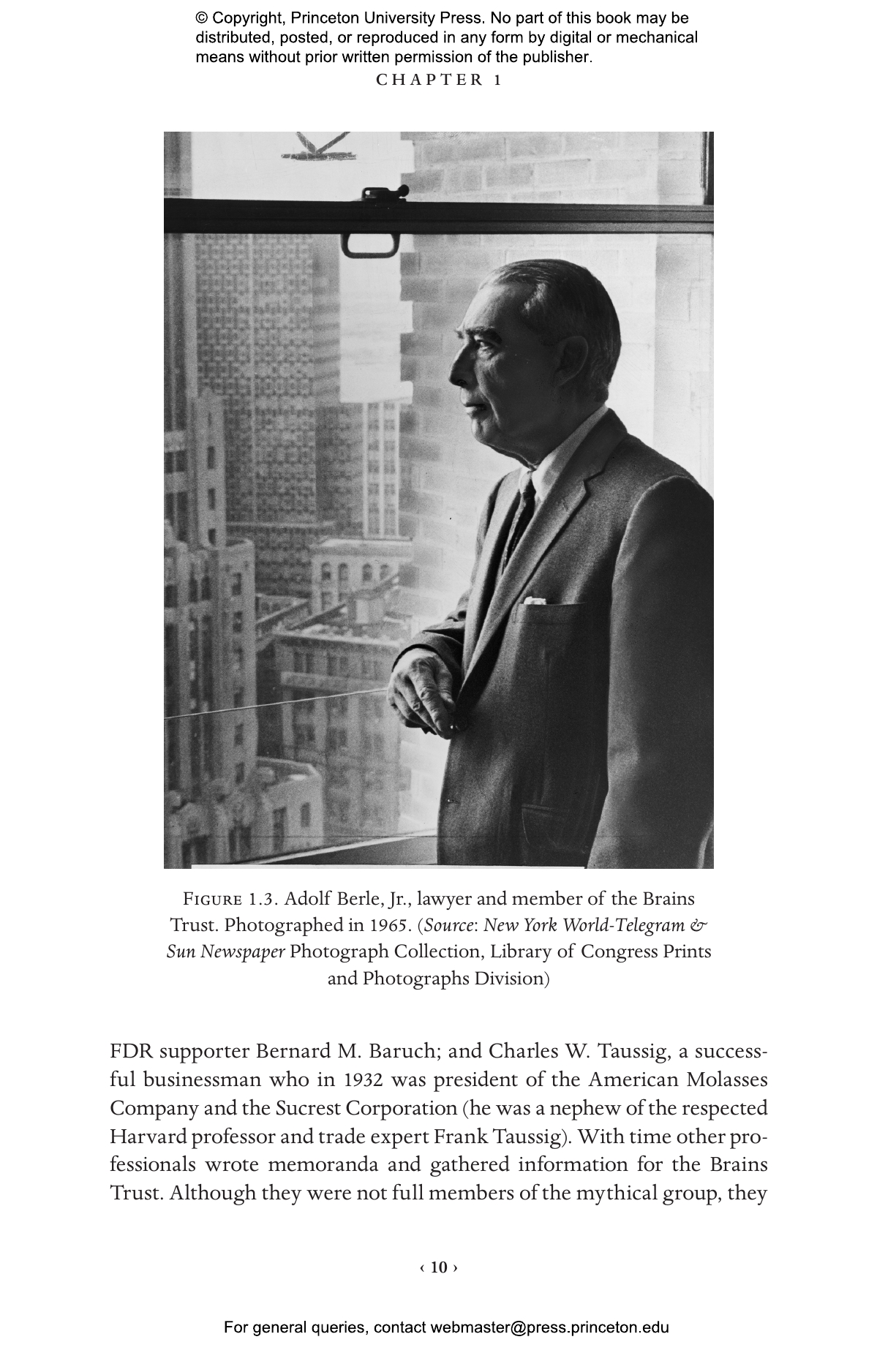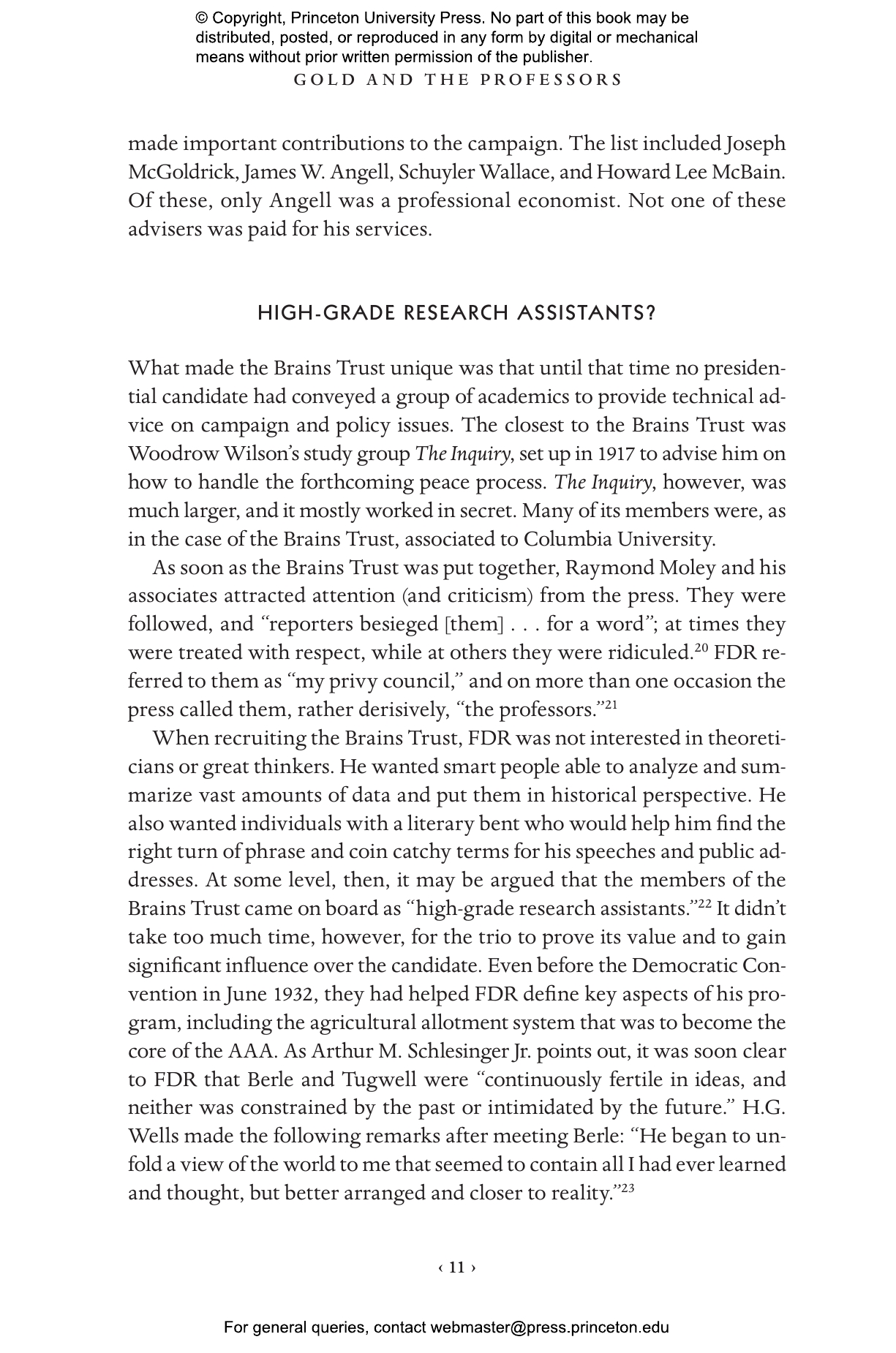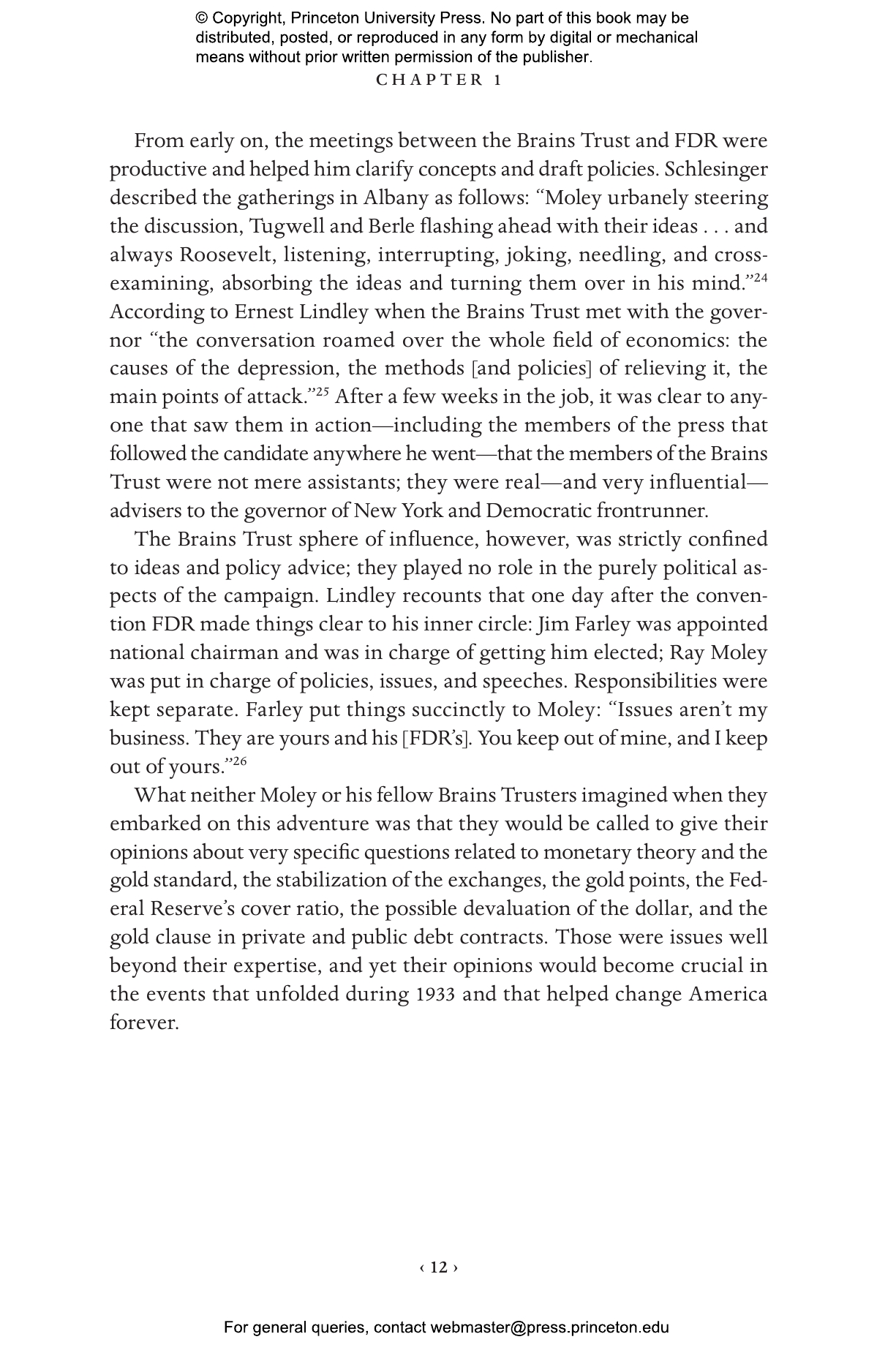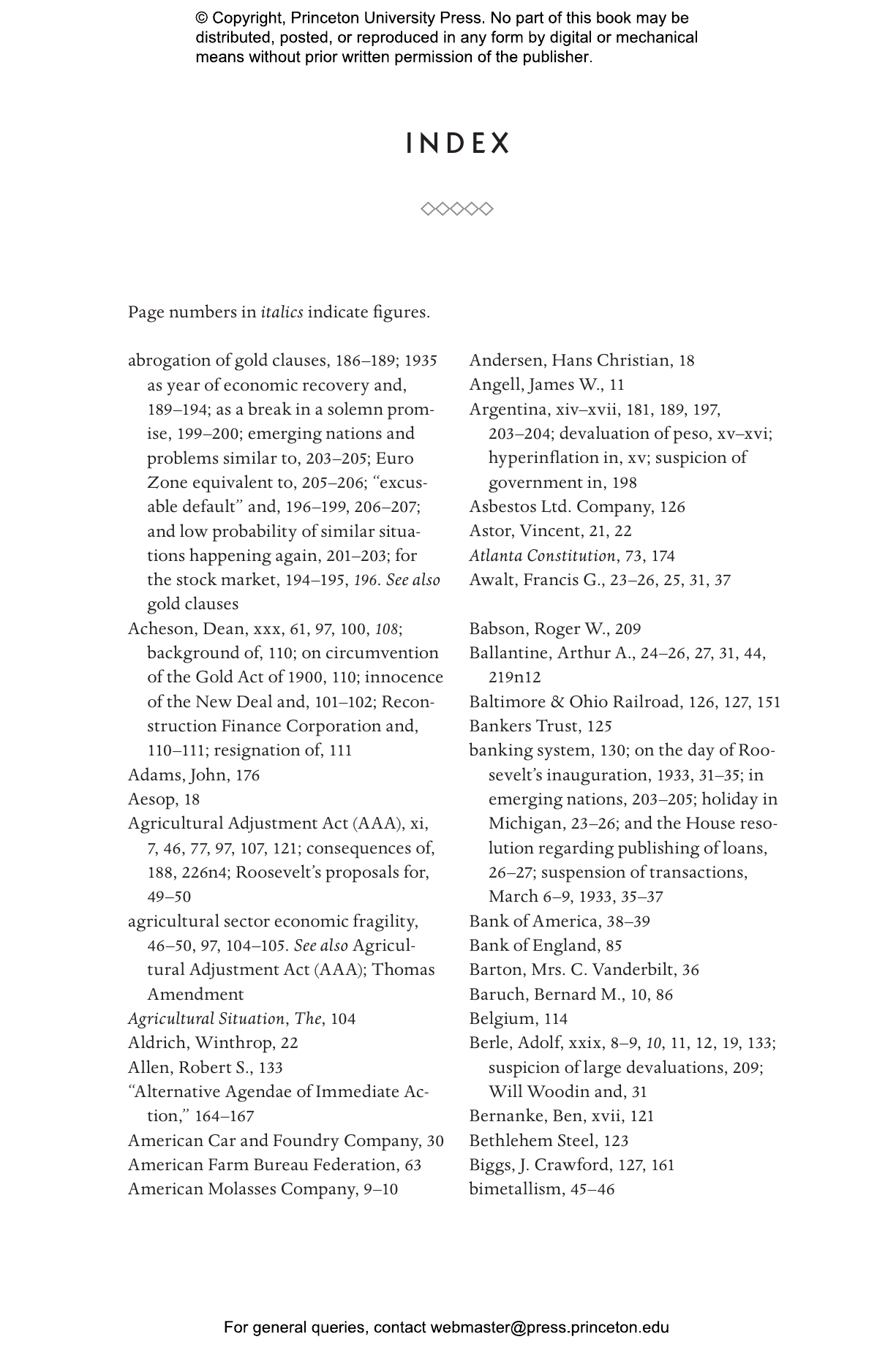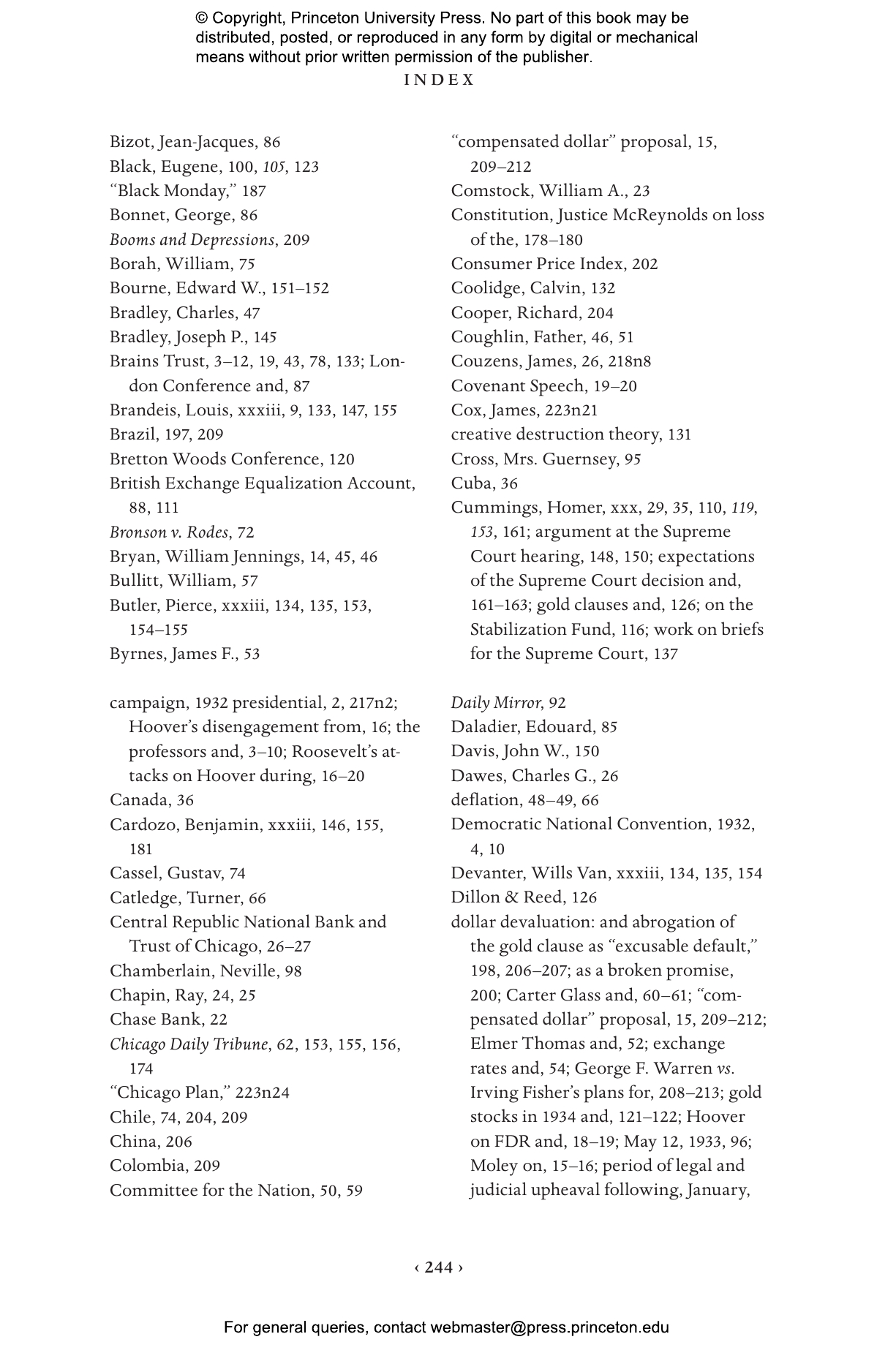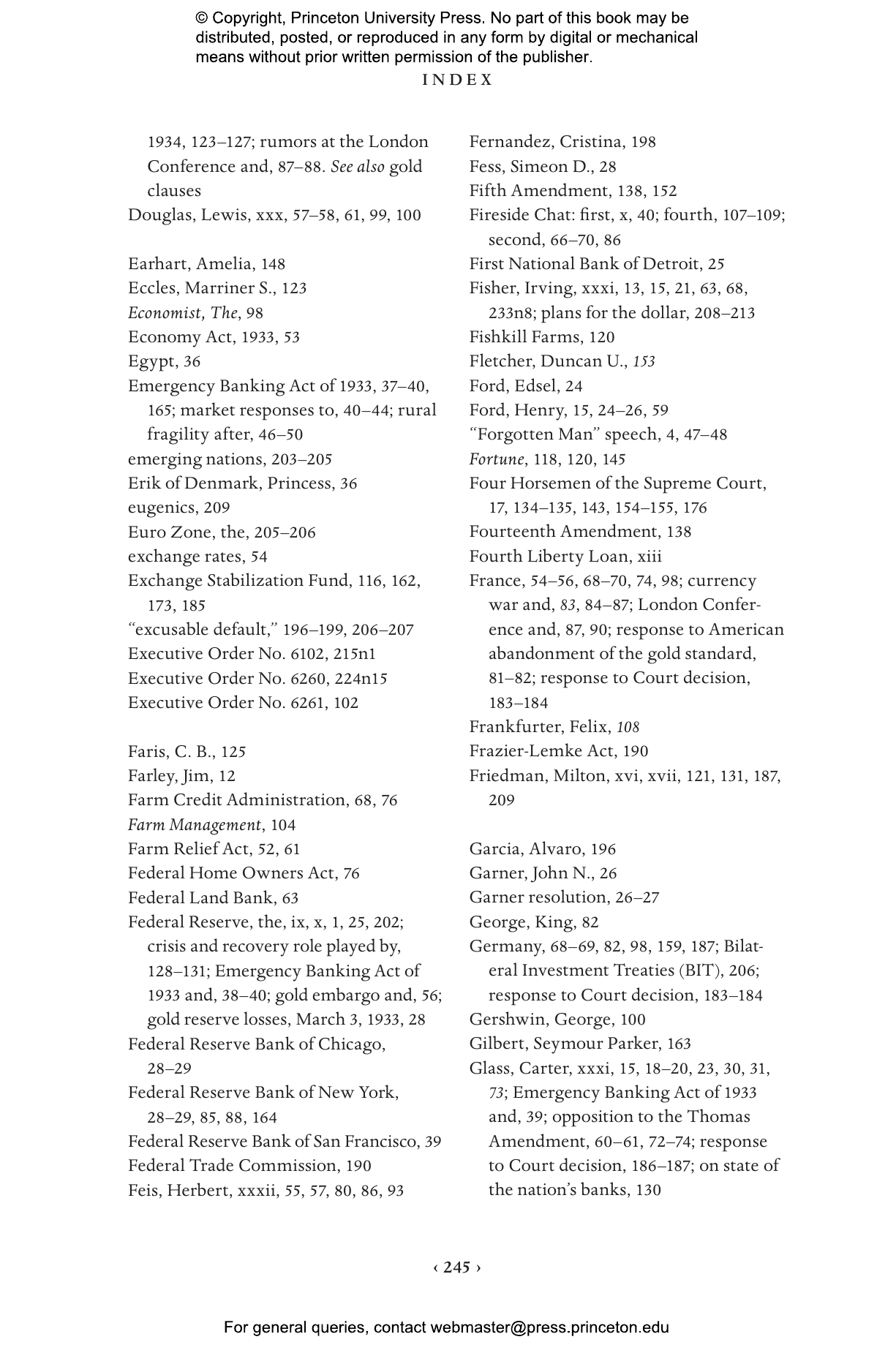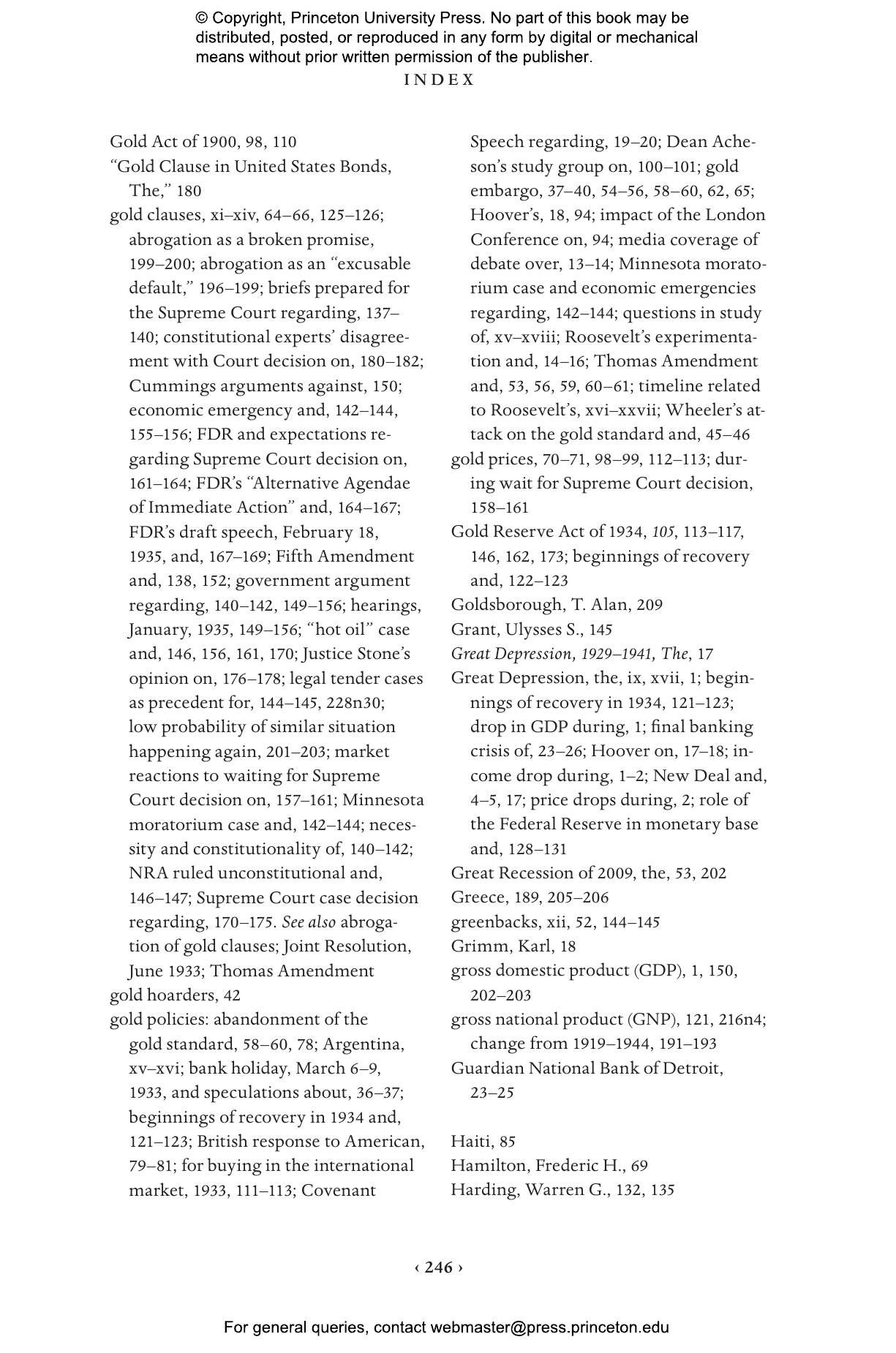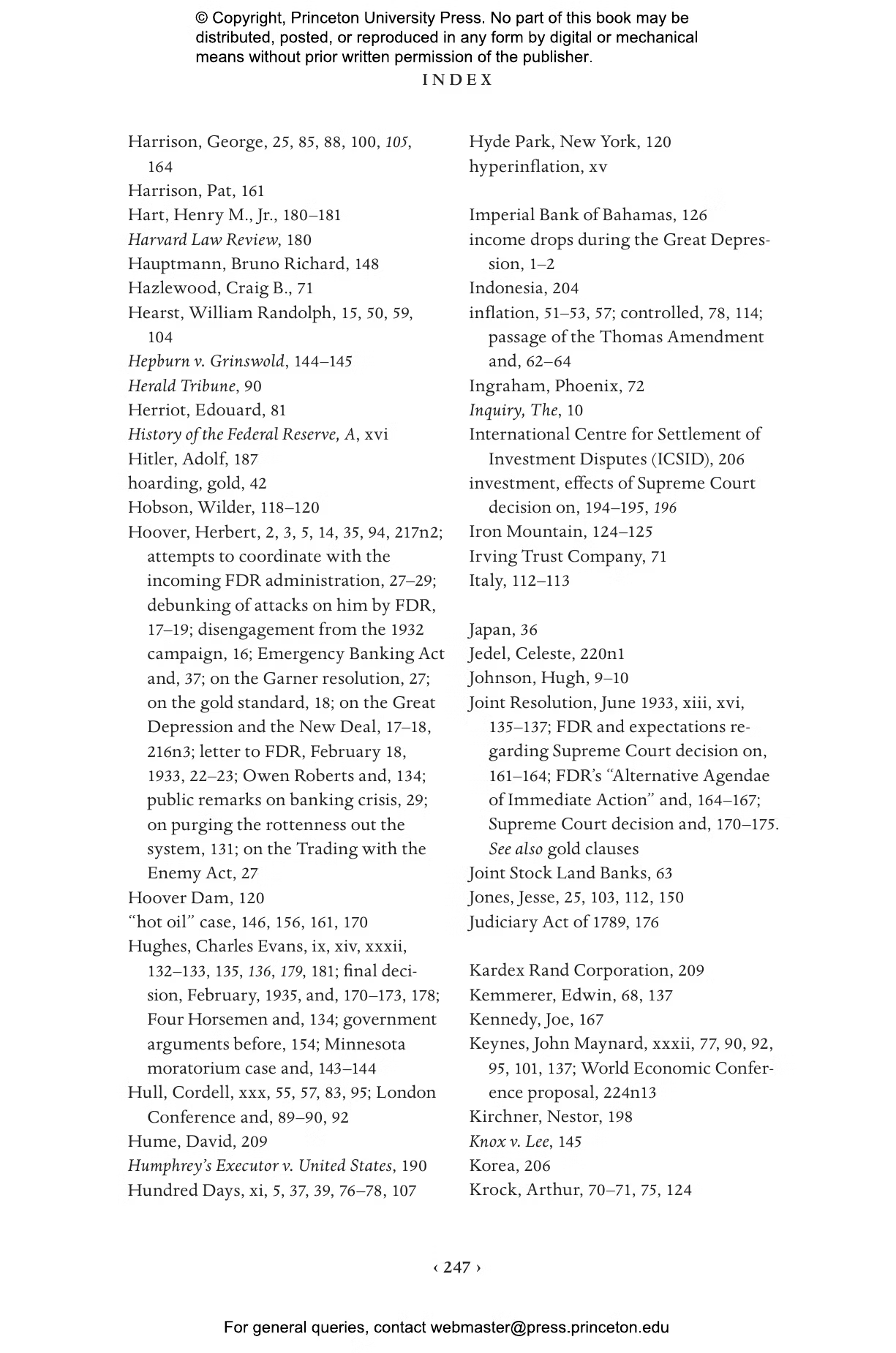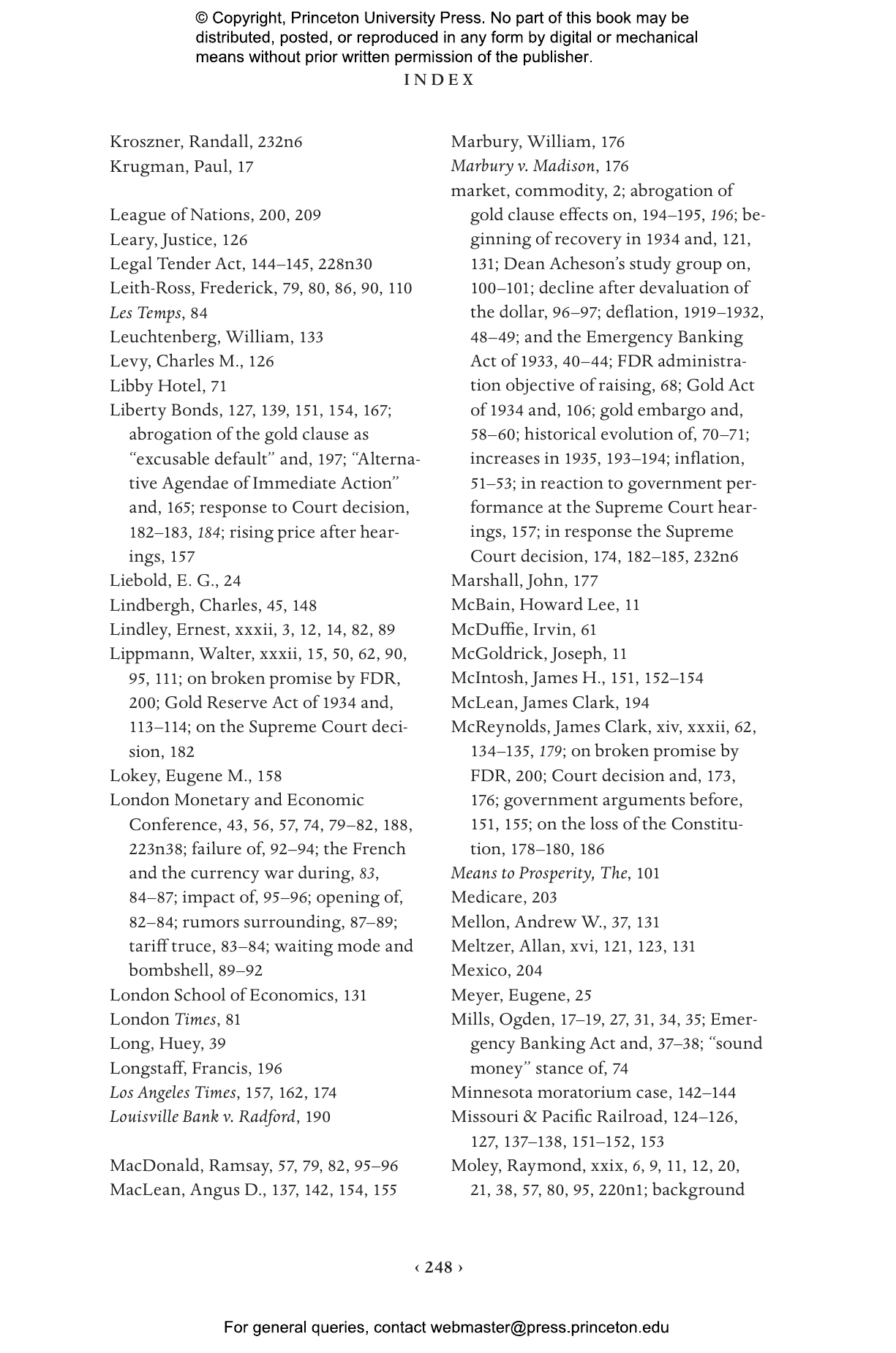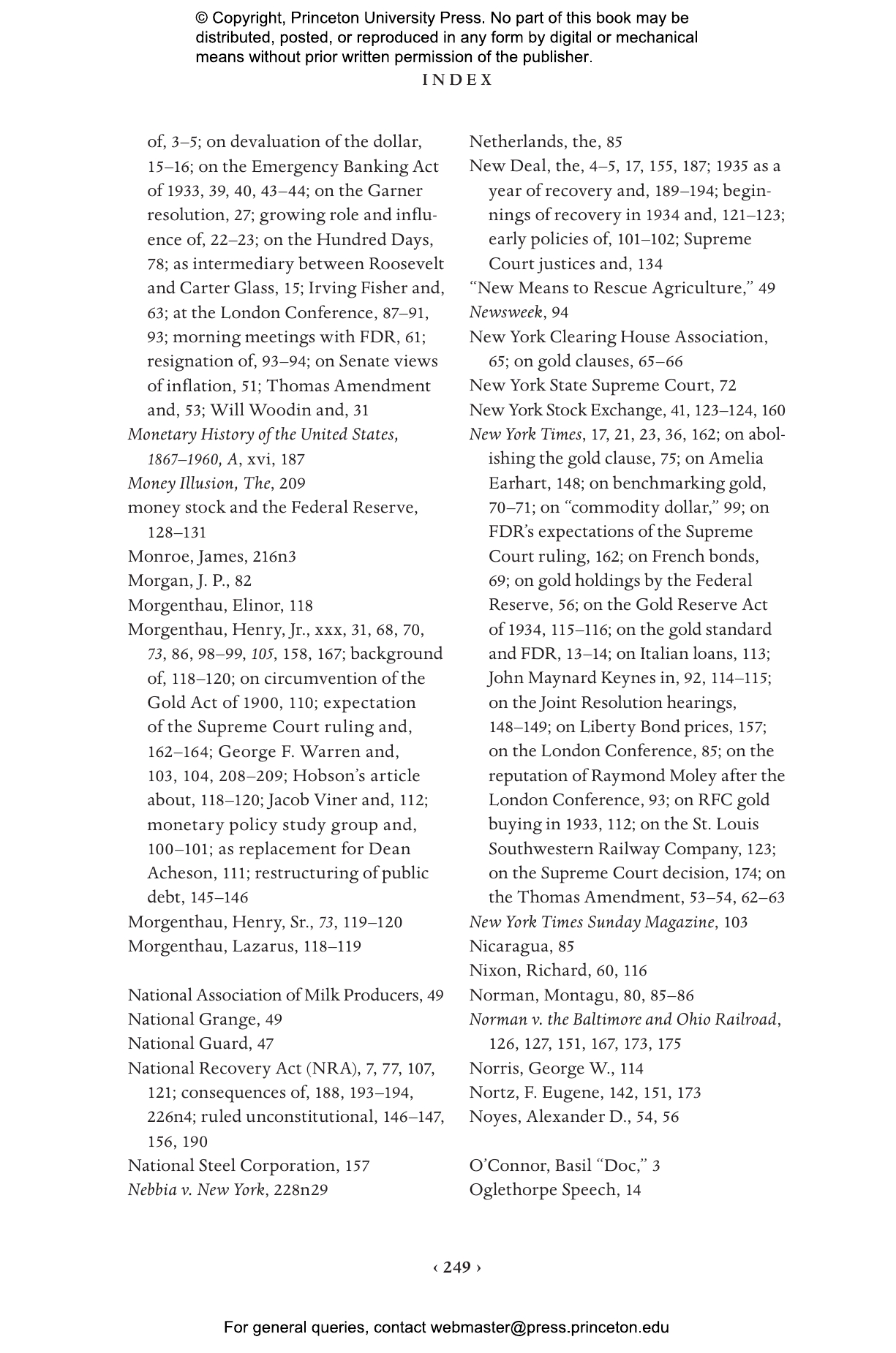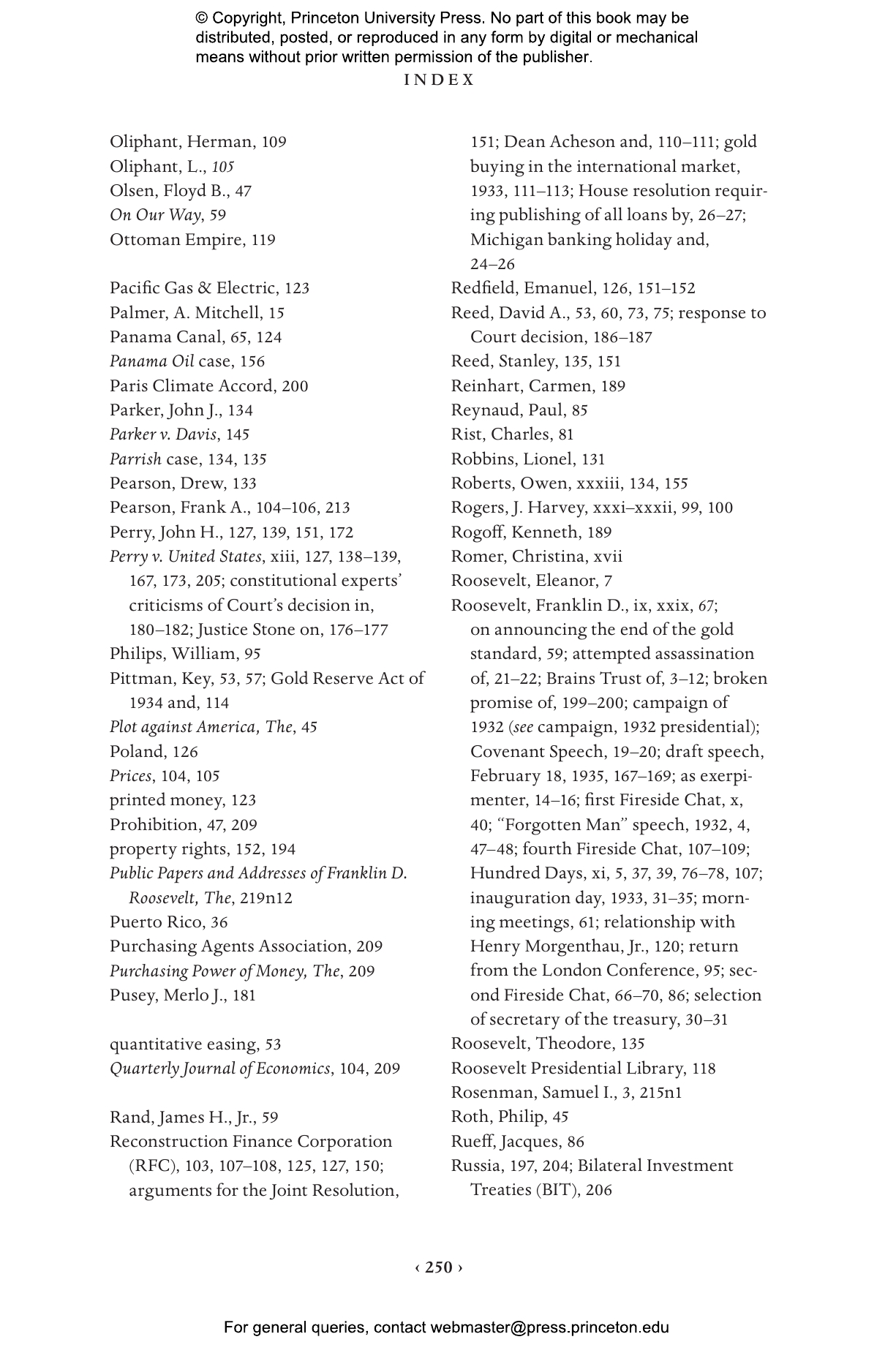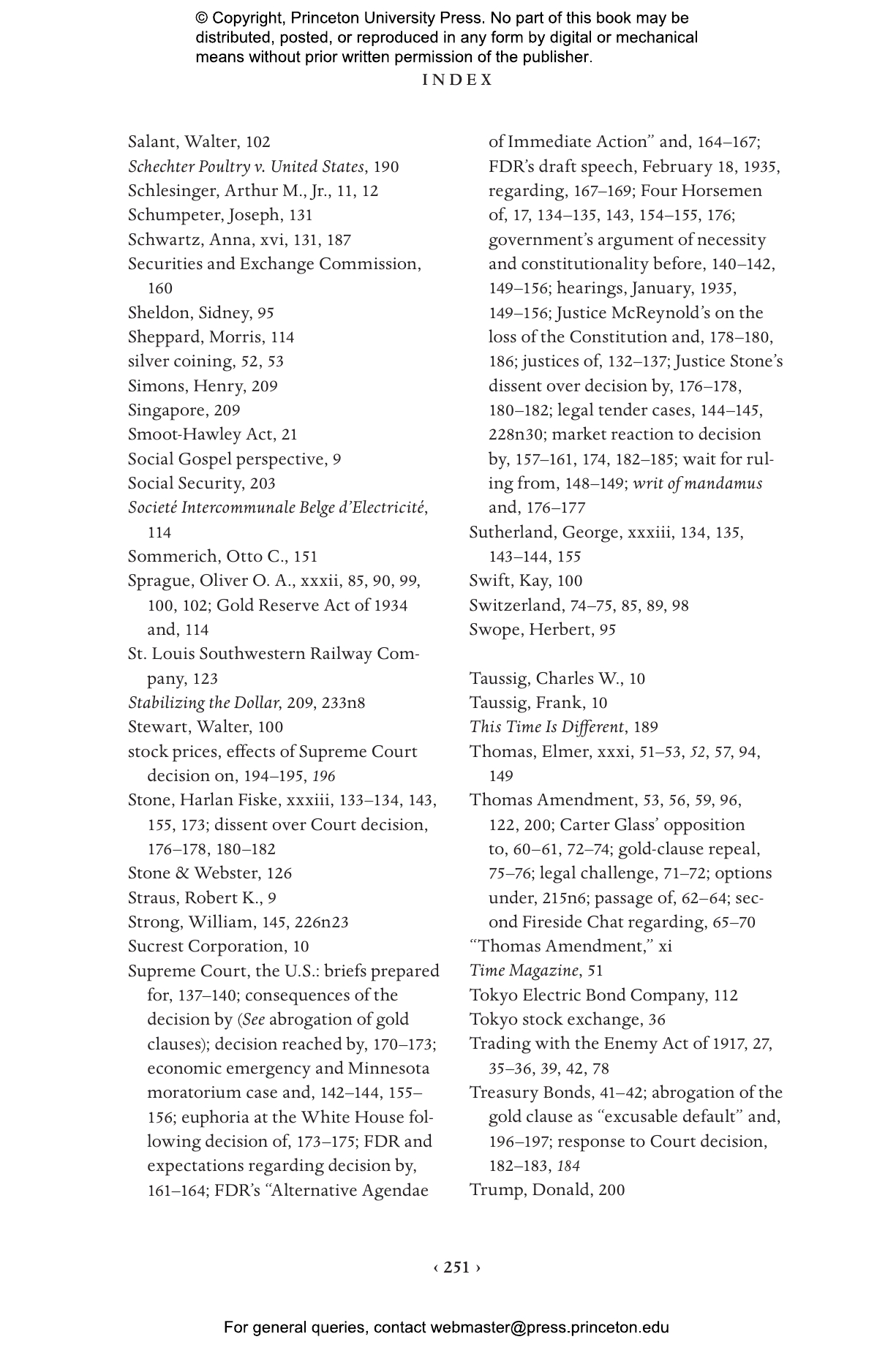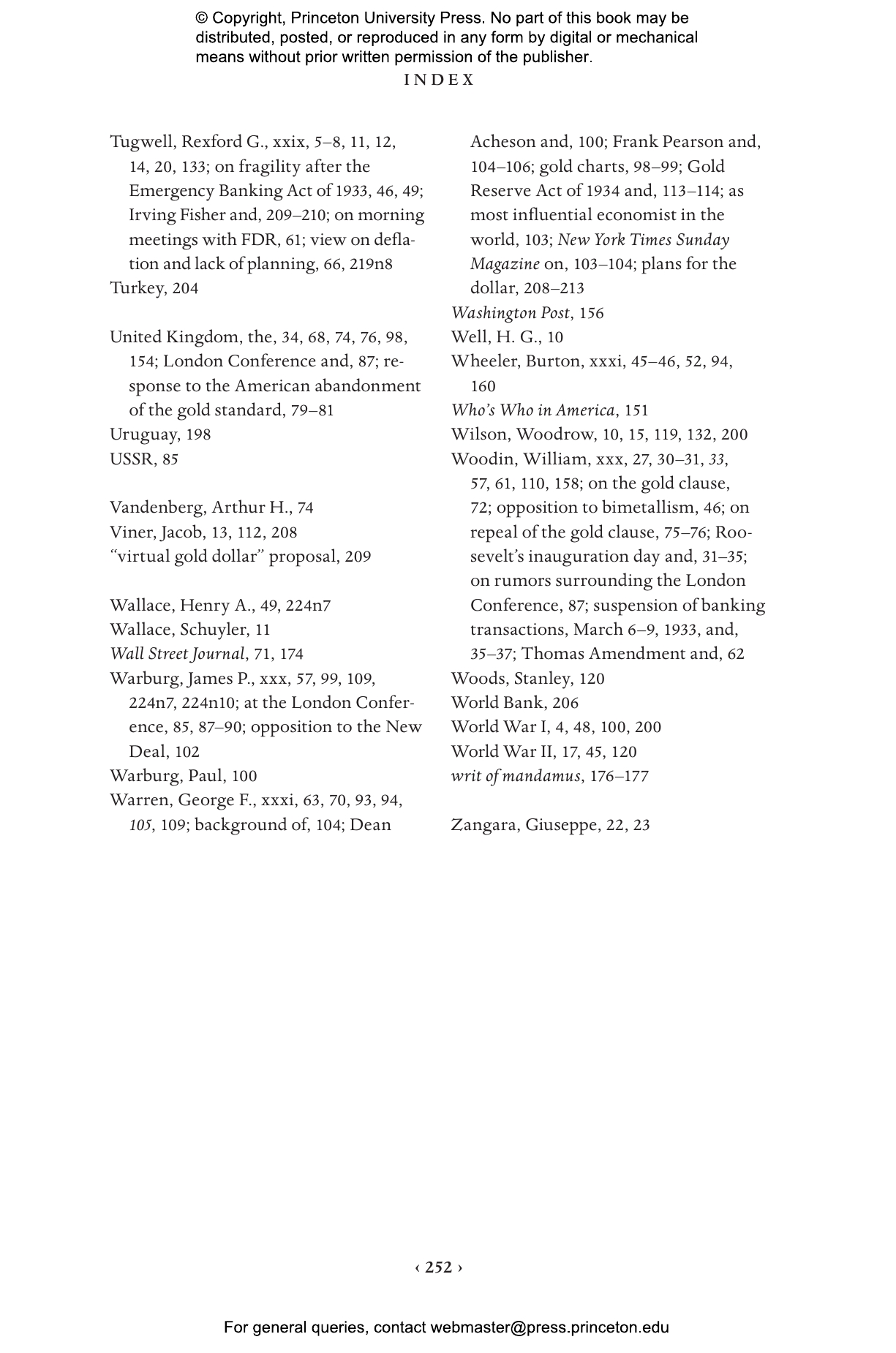The American economy is strong in large part because nobody believes that America would ever default on its debt. Yet in 1933, Franklin D. Roosevelt did just that, when in a bid to pull the country out of depression, he depreciated the U.S. dollar in relation to gold, effectively annulling all debt contracts. American Default is the story of this forgotten chapter in America’s history.
Sebastian Edwards provides a compelling account of the economic and legal drama that embroiled a nation already reeling from global financial collapse. It began on April 5, 1933, when FDR ordered Americans to sell all their gold holdings to the government. This was followed by the abandonment of the gold standard, the unilateral and retroactive rewriting of contracts, and the devaluation of the dollar. Anyone who held public and private debt suddenly saw its value reduced by nearly half, and debtors—including the U.S. government—suddenly owed their creditors far less. Revaluing the dollar imposed a hefty loss on investors and savers, many of them middle-class American families. The banks fought back, and a bitter battle for gold ensued. In early 1935, the case went to the Supreme Court. Edwards describes FDR’s rancorous clashes with conservative Chief Justice Charles Evans Hughes, a confrontation that threatened to finish the New Deal for good—and that led to FDR’s attempt to pack the court in 1937.
At a time when several major economies never approached the brink of default or devaluing or recalling currencies, American Default is a timely account of a little-known yet drastic experiment with these policies, the inevitable backlash, and the ultimate result.
"[Sebastian Edwards] skillfully narrates a pivotal episode in American political and economic history he considers too little remembered. . . . Edwards writes equally knowledgeably about economics and politics: . . . At a time of economic uncertainty at home and abroad, this comprehensive study of an important event in U.S. fiscal history has significant implications for today."—Publishers Weekly
"Sebastian Edwards' American Default is just such a superb history of the US exit from gold in 1933-34, satisfyingly detailed and highly accessible on both the relevant economics & law."—David Frum
"Edwards analyses the default that followed President Franklin Delano Roosevelt’s 1933 decision to devalue the dollar against gold. . . . The story is fascinating and the lessons eternal."—Martin Wolf, Financial Times
"[American Default] is the history of that mighty legal, moral, political and monetary controversy, the effects of which are with us still. . . . [Sebastian Edwards] knowledgably compares the 20th-century American default to Argentina’s 2002 abrogation of its dollar denominated debt."—James Grant, Wall Street Journal
"Brilliantly told."—Steve Hanke, Forbes
"Edwards ends his admirably accessible and illuminating book with some careful thoughts on recent financial crises around the world, such as those in Argentina and Greece, and shows why US gold cases from 1933 to 1935 are a useful precedent to understand how future such crises may be successfully resolved by hewing carefully to the rule of law. He believes that the cases may even be invoked by lawyers in other national, or international, arenas. If so, those involved will, no doubt, turn to this book for inspiration and guidance."—Benn Steil, Financial World
"Excellent. . . . A fascinating narrative of FDR's decision to devalue the dollar in 1933-34."—Scott Sumner, EconLog
"Edwards’ book is fascinating, well written and enjoyable."—Geoffrey Wood, Central Banking
"Great book by UCLA economist Sebastian Edwards about a key moment in American economic history. Many economists believe that the most important thing FDR did to help the economy recover from the Great Depression was to go off the gold standard. As part of that policy, he pursued laws that rewrote many bond contracts, annulling gold clauses. It was controversial then (and surely would be again if such an issue were ever to arise). Edwards does a wonderful job telling the story."—Greg Mankiw, Greg Mankiw's Blog
"Fascinating. . . . I couldn't put this book down."—Brenda Jubin, Seeking Alpha
"A shimmering example of the benefits of historical distance can be found in the UCLA economist Sebastián Edwards’ American Default, a sharp-eyed exploration of a little-noted episode in US economic history."—Ken Rogoff, Project Syndicate
"Sebastian Edwards has written a very important book on a monumental episode in U.S. history, the great debt default of 1933-35, which was a true turning point in American political and economic history. . . . I highly recommend American Default. It is more than compelling history; it is a tract for our times."—Gerald P. O'Driscoll Jr., Cato Journal
"A magnificent piece of scholarship."—Kenneth Rogoff, Project Syndicate
"This easily accessible economic, political, and legal history should be read by undergraduates, graduate students, and the general public. Each audience will gain a new perspective on an important though underappreciated episode in international political economy."—Laura Phillips Sawyer, Journal of American History
"Rarely does one read a book on a topic already researched thoroughly and still feel as if one has walked away with a new perspective."—James Caton, Independent Review
"Edwards’ clarity enables him to sustain the interest of the reader in spite of the technical nature of his narrative."—Peter Fearon, Journal of Transatlantic Studies
"American Default provides an in-depth look at one of the most important, but often neglected, events in U.S. economic history, the abrogation of bond’s gold clauses during the New Deal. Not only does the book provide an excellent discussion of the economics of this event, but it is a really good read because it delves into the personalities and the politics behind this effective default. I highly recommend it."—Frederic S. Mishkin, Columbia University
"I thought we knew about American abandonment of gold during the Great Depression. But American Default is an eye-opener. It is astonishing how chaotic were the circumstances and how woefully inadequate was understanding. Everyone interested in the history of gold, the Great Depression, the Greek or the Argentine crises, and in the crises to come should read this book."—Anne Krueger, Johns Hopkins University
"American Default is a fascinating and well-written book about the momentous decision to leave the gold standard in 1933. Sebastian Edwards skillfully weaves together the political, economic, and legal aspects of this important episode, with lessons for today. Highly recommended!"—Douglas A. Irwin, Dartmouth College, author of Clashing over Commerce: A History of US Trade Policy
"A really excellent book. Edwards provides a dramatic and readable account of monumental decisions that changed the course of history. American Default is sure to be a hit."—Michael D. Bordo, Rutgers University
